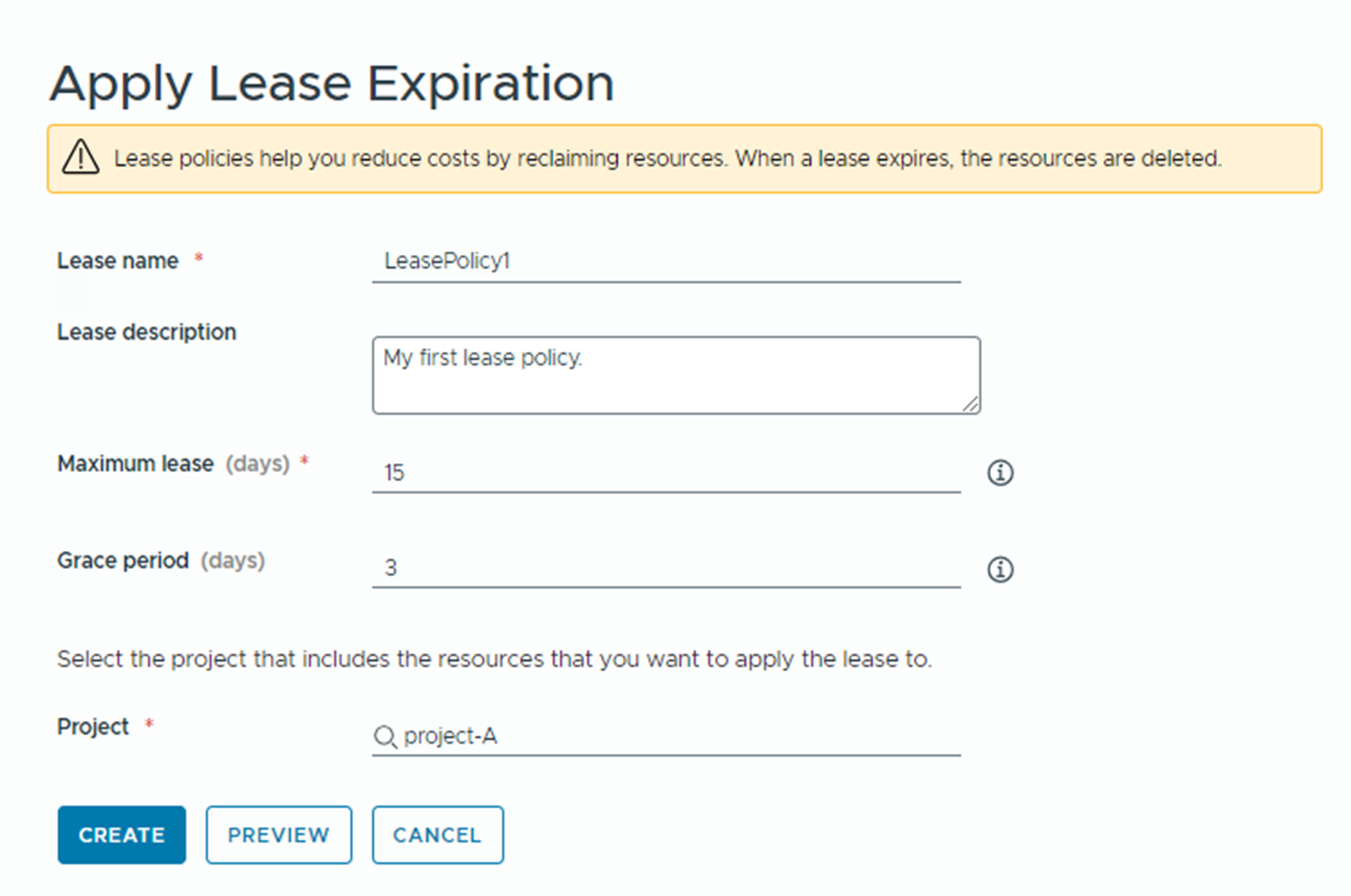As a cloud administrator using VMware Aria Automation for the first time, you can use the Launchpad in Automation Assembler to quickly set up a cloud account and apply a lease policy to catalog items. You can then use the dashboard on the Home tab to review usage and consumption details about your organization, such as cloud accounts, deployments, and other inventory.

- Add a vCenter cloud account. Cloud accounts are the credentials that are used to collect data from and deploy resources to your vCenter instance.
- Create a lease policy. Lease policies control how long a deployment is active.
Once you add a cloud account, you can use the Home tab dashboard to view a summary of resources, such as VMs, deployments, and other inventory, such as cloud accounts, cloud zones, and projects, that are currently managed by VMware Aria Automation.
Clicking the numbers in the dashboard widgets takes you to the respective pages in Automation Assembler. For example, click the VMs count in the Cloud Accounts & VMs widget to view a full list of discovered virtual machines.
You can use the Notifications widget to track and manage approval requests for deployments or day 2 actions, deployment status updates, and expiring deployment leases. For more information about notifications, see Send email notifications to Automation Service Broker users.
Step 1: Add a vCenter cloud account

- Navigate to the Home tab in Automation Assembler.
- On the Add Cloud Account card, click Add cloud account.
- Enter a name and description for the cloud account.
- Provide credentials.
- Enter the vCenter server host IP address or fully-qualified domain name.
- Enter your vCenter server administrator username and password.
- Click Validate.
- If you need to add tags to support a tagging strategy, enter capability tags.
You can use tags to distinguish between multiple vCenter cloud accounts when designing a template.
You can add or remove capability tags later. See How do I use tags to manage Automation Assembler resources and deployments and Creating a tagging strategy.
- Click Add.
You added a vCenter cloud account. To view your cloud accounts, click the green banner in the Launchpad.
Step 2: Create a lease expiration policy for deployments

- Click the Apply Lease Expiration card.
- Enter a name and description for the lease policy.
- Define the lease.
- Maximum lease is the number of days that the deployment resources are active without being renewed. If they are not renewed, the lease expires and the deployment is destroyed. If a grace period is specified, the user can renew the lease for up to the same number of days that the lease has been active.
- Grace period is the number of days the user has to renew an expired lease before the deployment is destroyed. If you don't define a grace period, it defaults to 1 day.
- Select a project.
If no projects exist, you can create one in this step. The project links your users with cloud account regions, so that they can deploy application templates with networks and storage resources to your vCenter instance.
The deployments that are associated with the specified project are managed based on the defined lease. Other projects are not affected.
- To preview which resources in the selected project the lease policy will impact, click Preview.
- Click Create.
The lease policy is applied to deployments. You can click the green banner to access your lease policy.
Results
You completed the tasks in the Launchpad. If you want to revisit any of the procedures, they appear as quick links at the top of the Home page.
Use the dashboard to view inventory objects that are currently managed by VMware Aria Automation.